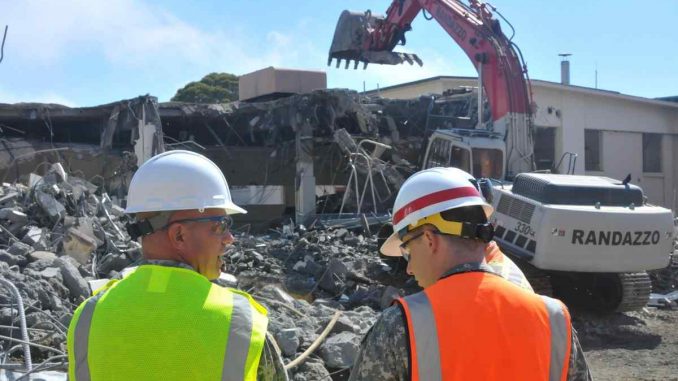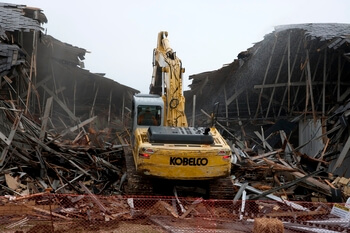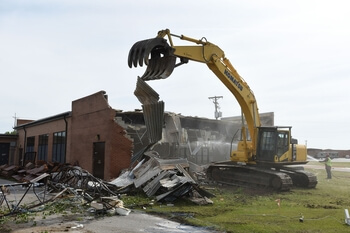
Concrete demolition is a task that requires precision, efficiency, and the right set of tools. Whether you’re a DIY enthusiast tackling a home renovation project or a professional in the construction industry, having the appropriate concrete demolition tools is crucial for success. In this comprehensive guide, we’ll explore the various tools available for concrete demolition, their features, and how to choose the right equipment for your specific needs.
I. Types of Concrete Demolition Tools
- Jackhammers
- The workhorse of concrete demolition, jackhammers deliver powerful percussive force to break through tough concrete surfaces.
- Electric, pneumatic, and hydraulic models are available to suit different applications.
- Consider factors such as weight, power, and handling when choosing a jackhammer for your project.
- Concrete Saws

- Circular saws equipped with diamond blades are ideal for precision cutting and controlled demolition.
- Walk-behind or handheld models provide versatility for various project sizes.
- Wet saws help minimize dust and keep the cutting blade cool during operation.
- Bustar Expanding Grout
- An alternative to traditional mechanical tools, expanding grout is a non-explosive solution for breaking and removing concrete.
- It’s a safe and efficient option, especially in confined spaces or areas where noise and vibration are concerns.
- Hydraulic Breakers
- Attachable to skid steers or excavators, hydraulic breakers deliver forceful blows for large-scale demolition.
- They are suitable for breaking through thick concrete walls or foundations.
- Concrete Crushers
- Designed to crush concrete into smaller pieces, crushers are effective for recycling and separating concrete from rebar.
- Attachments for excavators or skid steers allow for easy maneuvering in tight spaces.
II. Factors to Consider When Choosing Concrete Demolition Tools
- Project Scale and Scope
- Assess the size of the concrete structure you’re demolishing to determine the appropriate tools.
- For smaller projects, handheld tools like jackhammers or concrete saws may suffice, while larger-scale tasks may require heavy machinery.
- Power Source
- Consider the power source that aligns with your project requirements and constraints.
- Electric tools are suitable for indoor use but may have limitations in terms of mobility.
- Pneumatic tools are powerful and versatile but require an air compressor.
- Hydraulic tools, often used in heavy-duty applications, are attachable to equipment like excavators.
- Precision and Control
- Some projects demand precise cutting or controlled demolition. In such cases, tools like concrete saws or grinders are preferable.
- For more brute force and less precision, jackhammers or hydraulic breakers might be the better choice.
- Safety Considerations
- Prioritize safety when choosing concrete demolition tools.
- Wear appropriate personal protective equipment (PPE), including safety glasses, hearing protection, and dust masks.
- Ensure that tools are well-maintained to prevent malfunctions that could lead to accidents.
- Budget Constraints
- Different tools come with varying price tags. Consider your budget constraints and weigh the cost against the efficiency and features of the tool.
- While it may be tempting to opt for the most affordable option, investing in quality tools can save you money in the long run by reducing downtime and maintenance costs.
III. Tips for Efficient Concrete Demolition
- Proper Planning
- Before starting any demolition project, thoroughly assess the structure and create a detailed plan.
- Identify potential hazards and plan for the safe disposal of debris.
- Selective Demolition
- When possible, opt for selective demolition to preserve elements of the structure that can be reused or recycled.
- This approach is environmentally friendly and can also save on disposal costs.
- Correct Tool Usage
- Familiarize yourself with the correct usage of each tool to maximize efficiency and safety.
- Follow manufacturer guidelines and recommendations for maintenance and operation.
- Dust Control
- Concrete demolition generates dust that can be harmful if inhaled. Use tools equipped with dust control features or employ additional measures like water suppression.
- Waste Management
- Properly manage and dispose of the demolished concrete.
- Consider recycling options to minimize environmental impact.
Conclusion
Selecting the right concrete demolition tools is essential for the success of your project. Whether you’re breaking down a small concrete structure or tackling a large-scale demolition, understanding the features and considerations of each tool will help you make informed decisions. Prioritize safety, efficiency, and environmental responsibility to ensure a successful and sustainable concrete demolition process. With the right tools and approach, you can achieve your demolition goals with precision and confidence.


Leave a Reply